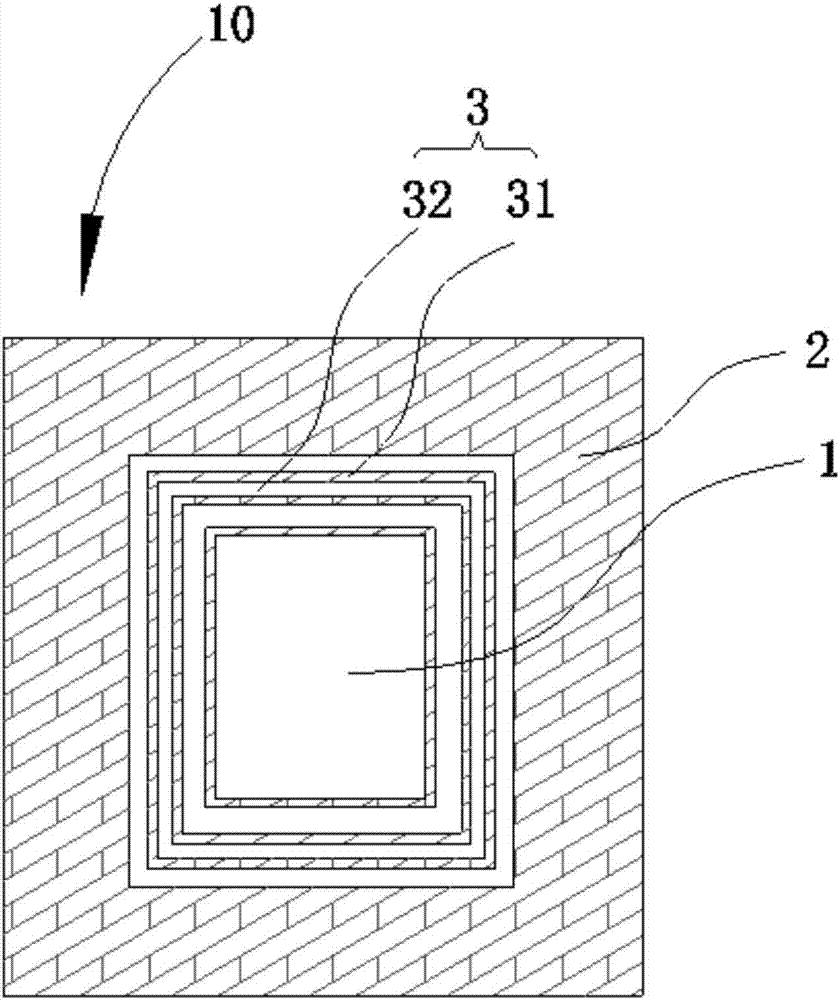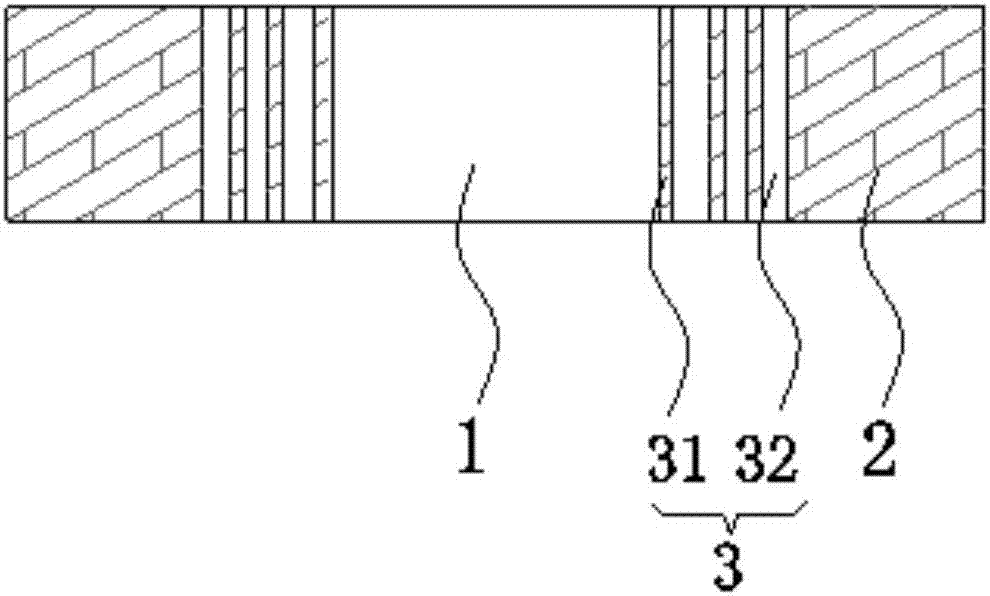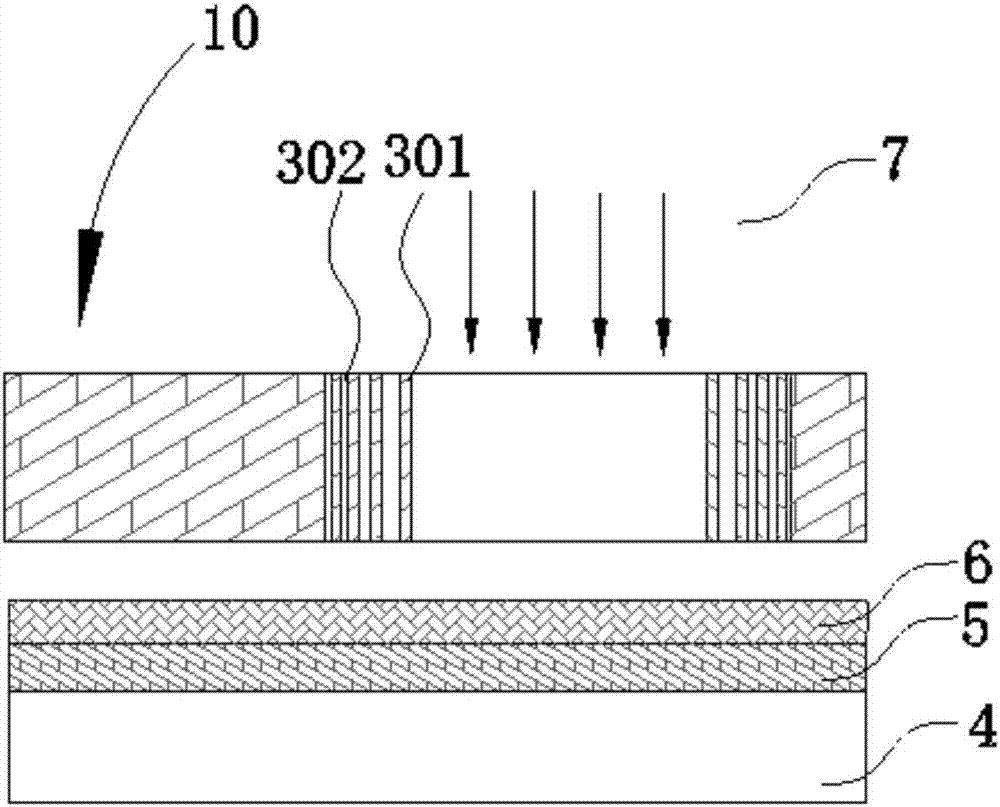Photomask and glass substrate manufacturing method
A manufacturing method and technology for glass substrates, which are applied in the photoengraving process of the pattern surface, the originals for optical mechanical processing, optics, etc., can solve the problems of film breakage, affecting the yield of finished products, short circuit of the common electrode of pixels, etc. The effect of being less prone to breakage and reducing the risk of residues
- Summary
- Abstract
- Description
- Claims
- Application Information
AI Technical Summary
Problems solved by technology
Method used
Image
Examples
Embodiment Construction
[0038] The present invention will be further described below in conjunction with accompanying drawing.
[0039] figure 1 and figure 2 They are respectively a plan view and a cross-sectional view of the photomask of the embodiment of the present invention. see figure 1 and figure 2 , the photomask 10 includes a light-transmitting region 1 and a light-blocking region 2, and the photomask 10 also includes a partially light-transmitting region 3; the partially light-transmitting region 3 is located between the light-blocking region 2 and the light-blocking region 1 to allow light to partially pass through; the partially transparent area 3 includes several identical light-shielding films 31, and light-transmitting gaps 32 are formed between adjacent light-shielding films 31, and the transmittance of the partially light-transmitting area 3 is along the The light-transmitting area 1 gradually decreases toward the light-blocking area 2 .
[0040] It should be noted that the c...
PUM
 Login to View More
Login to View More Abstract
Description
Claims
Application Information
 Login to View More
Login to View More - R&D
- Intellectual Property
- Life Sciences
- Materials
- Tech Scout
- Unparalleled Data Quality
- Higher Quality Content
- 60% Fewer Hallucinations
Browse by: Latest US Patents, China's latest patents, Technical Efficacy Thesaurus, Application Domain, Technology Topic, Popular Technical Reports.
© 2025 PatSnap. All rights reserved.Legal|Privacy policy|Modern Slavery Act Transparency Statement|Sitemap|About US| Contact US: help@patsnap.com



